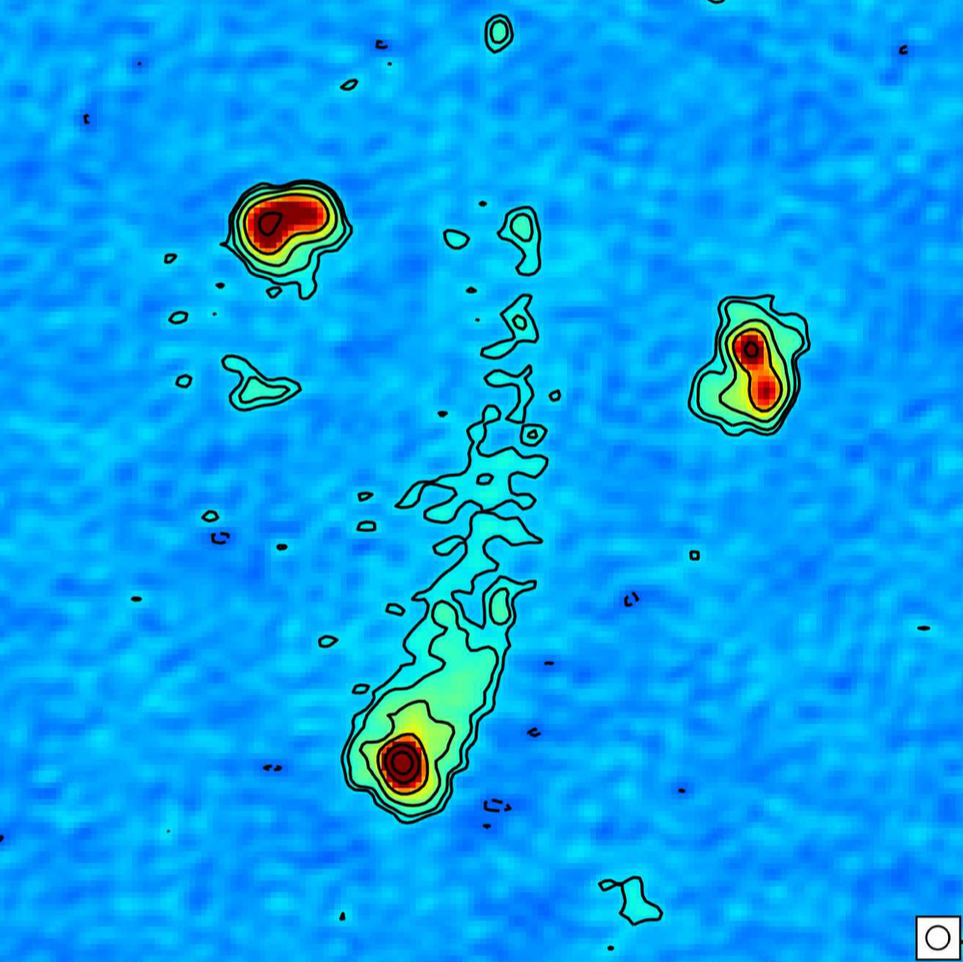Quasi-periodic oscillations appear to be a common characteristic of accreting systems and have been observed in black hole and neutron star X-ray binaries, alongside active galactic nuclei and even ultraluminous X-ray sources. The focus of this blog post is quasi-periodic oscillations in black hole X-ray binaries. Black hole X-ray binaries are comprised of a stellar mass black hole feeding on a nearby star. Material siphoned off the star by the black hole swirls around the black hole, forming an accretion disk that shines brightly at X-ray frequencies (see Figure 1). Not all of the material in the disk is consumed by the black hole- hydro-magnetic processes in the inner regions…
Read More >>The curious case of FR0s: The relatively new class of radio galaxy
Radio galaxies are a class of active galactic nuclei that shine very brightly at radio frequencies but also radiate across the entire electromagnetic spectrum too. Powered by accretion of matter onto a central fast-spinning supermassive black hole, radio galaxies can display extended radio structures- jets. Jets emit radiation strongly at radio frequencies and can propagate hundreds of kiloparsecs (1 kiloparsec = 3.086 x 1016 km) or more beyond the central black hole that powers them. Jets travel with relativistic velocities, carrying large amounts of energy with them to regions well outside the confines of their host galaxy. Radio galaxies which display these jets can be classified based on their morphology…
Read More >>War of the Clouds: Relativistic jet-cloud interactions
The powerful jets launched by a supermassive black hole feeding on material at the centre of a galaxy, comprise some of the most powerful and highly energetic sources of sustained energy in the known Universe. Launched with velocities close to the speed of light, jets transport large amounts of energy from the central regions of their host galaxies and deposit it into their surroundings. Jets emit radiation across the entire electromagnetic spectrum, but emit radiation particularly strongly at radio frequencies. As the jets travel outwards from the central region of their host galaxy they can come into contact with a variety of obstacles, alongside complex and even hostile environments, which…
Read More >>The Lord of the Wings: Winged and X-shaped radio galaxies
Radio galaxies are powered by a central supermassive black hole feeding on surrounding matter. Some of this matter is ejected in opposing directions along the axis of rotation of the black hole in the form of powerful relativistic jets. These jets are launched with velocities close to the speed of light and travel vast distances away from their host galaxies. They emit radiation predominantly at radio frequencies, but also emit across the entire electromagnetic spectrum. Jets have a major impact on their surroundings. They can significantly heat their environments, reduce star formation and limit the growth of galaxies. When observed at radio frequencies jets display a wide range of different appearances.…
Read More >>When A Black Hole Devours A Star
Black hole X-ray binaries are systems in which a stellar-mass black hole ‘feeds’ on (accretes) gas from a companion star. Gas from the star swirls around the black hole, forming an accretion disk. The accretion disk shines brightly at X-ray frequencies and black hole X-ray binaries are some of the brightest X-ray emitting sources observed in our galaxy. Black hole X-ray binaries (BHXRBs) have been observed to cycle between different ‘accretion states’. These accretion states are associated with different emission and outflow properties— Some accretion states are associated with very bright X-ray emission, while others display weak X-ray emission. In some accretion states weak outflows are driven from the disk…
Read More >>Simulating jets blasting from galaxies
Hi, my name is Gibwa Musoke. I recently joined Sera’s group as a postdoc. I conduct supercomputer simulations of the powerful fast-moving outflows, called jets, associated with active galactic nuclei (AGN). AGN are highly energetic and very bright compact regions at the centres of some galaxies, and are powered by black holes `feeding’ at the galactic centres as shown in Figure 1. Research Interests I am primarily interested in investigating how the jets interact with their environments at large distances from the centres of their host galaxies, and additionally, how the conditions in their environments influence the evolution of the jets. I conduct high resolution hydrodynamic simulations using the FLASH…
Read More >>

